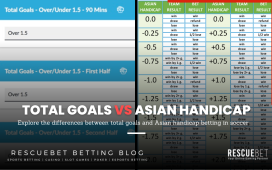A wager on two outcomes simultaneously, for the same bet, is an each-way bet. An each-way chance gives a punter more than one opportunity to win. A punter must place two identical wagers of the same amount on who will win the race and finish in a top place. For example, a punter can place a bet on the horse and jockey Dash to finish in first as the winning wager. The punter then makes a place wager for Dash to finish in the top-three (or top-six). A punter can also place a wager on the outcome of the Champions League, making a wager that Chelsea will either win the League (win bet) or finish in the top-2 (place bet).
Why Each-Way Bets?
Each-way bets are prevalent in sporting events with multiple betting outcomes. Making a wager on the outright winner in horse racing among more than 20 jockeys can be very hard to predict. In the Champions League, it can be making a wager out of 16 or 32 teams. If the prediction is correct, the punter wins, but the punter loses a higher probability of losing if the forecast is wrong. Punters effectively make each way wagers to bet on the winner and bet on another outcome should the first bet fail. Each-way bets serve as insurance for a punter willing to make a wager on the outright winner of a sport or tournament. A punter may have it on good authority that a team will win the FA Cup that season. However, the odds of that team winning are lesser versus a top-4 finish. If the team wagered on doesn’t win but has a perfect run, a punter can still expect some payment from the wager made instead of nothing.
Payout
A punter can win in the following ways:
- The team finishes first – then the punter wins both the win and the place wagers. A first-place finish on an each-way bet is the best outcome a punter can hope for and gives a punter the most returns.
- The team reaches the finals – by reaching the semi-finals or finals, the team has effectively secured a place finish or a top finish. This bet entitles a punter to win only the place part of the bet and not the win part.
- The team fails to qualify past the semis – if the team fails to qualify past the semi-finals, then a punter loses on both wagers made. In some cases, a team needs to reach the finals and lose for a place bet to win.
Various factors influence the payout a punter can expect to receive. A punter will get different odds at the start of the tournament for other teams versus if the game is a quarter-way through. The odds for predicting a win on a favorite team can range between 5/1 to 1000/1 for an unpopular group. Punters can compare the payout of an each-way bet with other types of bets such as tournament winner, accumulator bets, etc. If a punter wins a place bet, a punter can expect a lesser payout since the odds for a place are set at ⅕ to 1/10 of a winning wager. For example, a $10 stake can return $40 on a site bet and $200 or above on a winning bet. The total bet a punter wagered to win is $10+$10 = $20.
How To Place Each-Way bets?
- A punter must check which team is expected to win the tournament based on the odds by different bookies.
- A punter must simultaneously check the past results of teams playing in the tournament or sport. Not only are winners significant, but also records of teams finishing in the top-4 in the game over the past few seasons.
- Punters can make each-way bets across multiple sports, teams, leagues, and tournaments. Some tournaments are more predictable than others, such as PSG winning in Ligue 1 or Juventus winning in Serie A. However, not all bookies offer one-way wagers on lesser-known leagues or outcomes across the globe.
- Zone in on the best odds by different providers for win and place bets versus returns. Other providers have different odds and incentive schemes for placing bets and winning bets. Utilizing bonuses and rebates helps a punter win even more on an each-way wager.
























